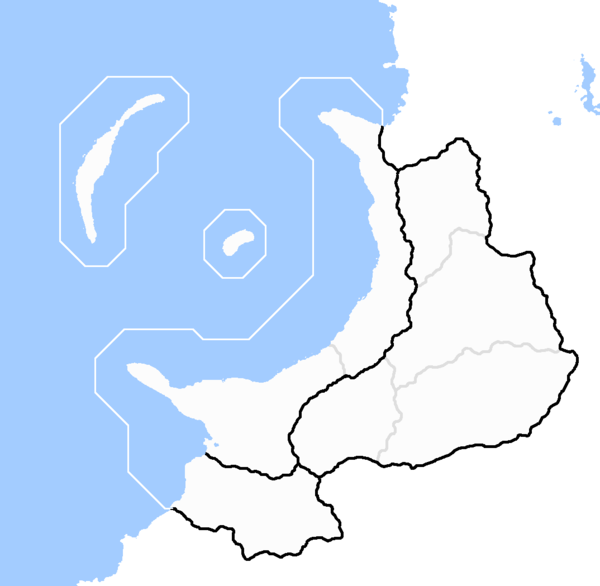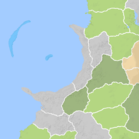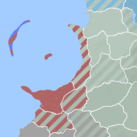Crater Nations
The collective history of the Crater Nations is one of routine rise and fall, and can be encapsulated in a single all-inclusive page, due to the short-lived nature and repeated collapse of nations occupying the area known as the Kolusean Crater.
The Crater Curse
The geographic area surrounding the Kolus Crater has become a source of superstition among geopolitical circles of Kerbin. Dubbed "The Crater Curse" it states that no nation can remain stable for more than 10 years. Research into this curiosity has named it "Crater Collapse Syndrome". The syndrome is based on a number of internal and external factors unique to the area.
Geographic
80% of the terrain surrounding the crater is mountainous with the only zones of flat arable land being Boomerang Island and a thin band along the coast. The lack of farmland prevents the formation of a single large city to which power in the area can center. The dispersion of power across the crater leaves no dominant faction to maintain power. The frequent civil conflicts as a result is a main source of Crater Collapse from internal factors.
Political
Western Kolus is an unstable area of Kerbin, an instability that bleeds into the crater. Regular conflicts in surrounding areas upset established power balances within the crater, this can best be seen in the transition from Jamhana to Valsang in which the rise of Zokesia as the prime regional power and humiliation of the state emboldened friendly groups within.
Demographic
Population in the crater is low as a result of geographic and political factors. The crater suffers heavily from Brain Drain into the nearby cities of Ezekialgrad and Ward, this leaves behind a rapidly aging and slowly growing populace. A population poorly suited to the longterm function of a nation.
Cultural
Lying at the intersect point of Arcovy, Valsang, Zokesian, Wovian, and Bosmyth ethnic areas. Constant tensions between each of these groups with the other has caused failures in forming cohesive states. Cultural tension is the primary driving force of Crater Collapse from internal factors.
|
K.R.A.T.O.R.
|
|||||
|---|---|---|---|---|---|
 |
|||||
| Common Name | K.R.A.T.O.R. | ||||
| Denonym | Krators | ||||
| Politics | |||||
| Government | Theocracy | ||||
| Foundation | 2125 | ||||
| Preceded by | S.E.R.G. | ||||
| Demography | |||||
|
S.E.R.G.
|
|||||
|---|---|---|---|---|---|
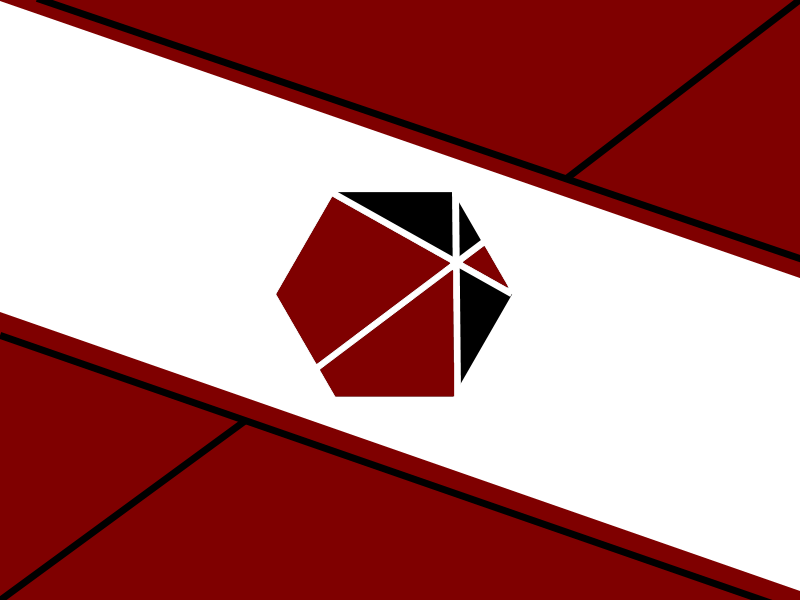 |
|||||
| Common Name | S.E.R.G. | ||||
| Denonym | SERGs | ||||
| Politics | |||||
| Government | Democracy | ||||
| Foundation | 2115 | ||||
| Preceded by | Malafranz | ||||
| Followed by | K.R.A.T.O.R. | ||||
| Demography | |||||
K.R.A.T.O.R.
Little is known about the secretive society that runs the crater following the collapse of S.E.R.G.
S.E.R.G.
A group of scientists who tried to topple the Zokesian government following the Kroman-Zokesian War. Their defeat in the elections of 2125 were partly due to the rise of the K.R.A.T.O.R. theocracy, a grass-roots movement which soon swept the crater.
Malafranz
|
Malafraz
|
|||||
|---|---|---|---|---|---|
 |
|||||
| Common Name | Malafranz | ||||
| Denonym | Malafraz | ||||
| Politics | |||||
| Government | Unitary Presidential Republic | ||||
| Foundation | 2098 | ||||
| Preceded by | Cythia | ||||
| Followed by | S.E.R.G. | ||||
| Demography | |||||
Malafranz is a nation embedded in the ideals of exceptionalism. Formed from Valsang and Wovian refugees alongside a zokesian minority, the nation stakes claim to all the crater's mainland and its central island.
The nation was met with adversity early on when confronted by the surrounding Zokesian federation, KEDC, and deep north nomads.
Malafranz later ceded control over the central island and ascended to join the KEDC and zokesian federation. A decision which is argued by some to be a result of external pressures rater than national will.
As of 2103 Malafranz stood as a middle power of Kolus, intent on reclaiming the crater islands. Under a libertarian regime, and an industriaised economy, Malafranz hopes to aid other countries, and defeat those in opposition of individual freedoms.
Following the Kroman-Zokesian war, Malafranz collapsed and gave way to the research institute of S.E.R.G.
Cythia
|
Cythia
|
|||||
|---|---|---|---|---|---|
 |
|||||
| Common Name | Cythia | ||||
| Demonym | Cythian | ||||
| Politics | |||||
| Government | Unitary Governence | ||||
| Foundation | 2083 | ||||
| Preceded by | Wo | ||||
| Demography | |||||
Cythia was a sub-state of New Arcovy. Formed by Zokesian colonists following the Grail Genocides. Thought to be the nation that would break the crater curse due to the sheer lack of cultural disparity.
The area was administered by the Arkadii-Zokesian Federation until the seccession of New Arcovy wherein almost all inhabitants of the area were wiped out. The area once again fell into wilderness shortly after.
In the years following, thousands of valsang and wovian citizens have returned from abroad to resettle the troublesome area. Large scale decolonization has also been noted from the former Wovian colony of Gilly, now the seat of the Republic.
Wo
|
Republic of Wovia
|
|||||
|---|---|---|---|---|---|
 |
|||||
| Common Name | Republic of Wovia | ||||
| Demonym | Wovian | ||||
| Politics | |||||
| Government | Federal Presidential Republic | ||||
| Foundation | 2077 | ||||
| Preceded by | Crater | ||||
| Demography | |||||
The Republic of wo’ Formed in 2077, following the collapse of the Crater Confederacy. It covered an area of only the outermost Crater Islands.
The nation maintained a defensive mindset, being it chose to stick to its own borders, not invade other nations. Despite this initial mindset the republic is responsible for the capitulation of the Spice Reciprocity.
A number of military installations dotted over the nation create an overlapping lattice of anti-air batteries, enough to defend against air attack.
Wo fostered a substantial colonisation program and a successor colony of the nation maintains holdings on the Evian moon of Gilly.
The Republic of Wo eventually fell when annexed by Zokesia following the Great Kerbin War
Crater
|
Crater Confederacy
|
|||||
|---|---|---|---|---|---|
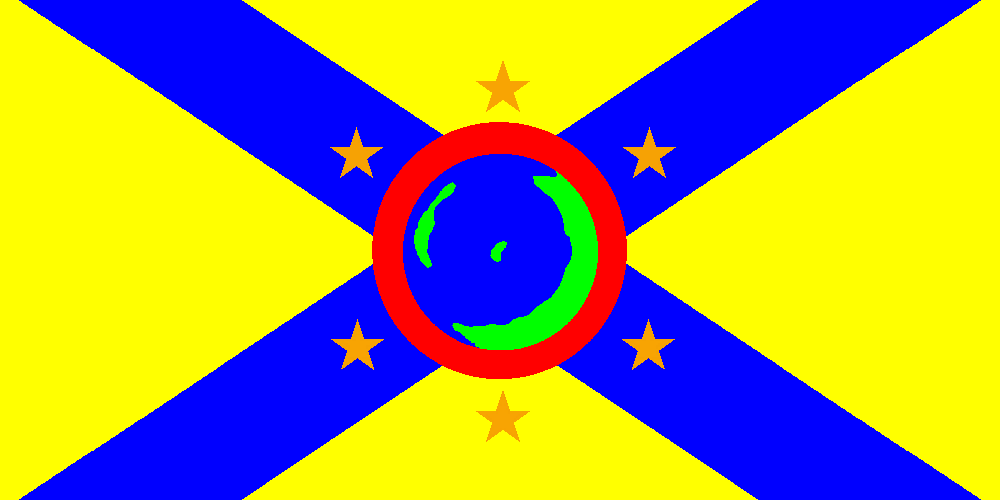 |
|||||
| Common Name | Crater Confederacy | ||||
| Demonym | Cratern | ||||
| Politics | |||||
| Government | Naval Junta | ||||
| Foundation | 2074 | ||||
| Preceded by | Valsang | ||||
| Demography | |||||
The Confederacy was a coalition of warlords with control over the crater proper and some area to the south of it.
The Crater Confederacy formed following a failed coup by the Valsang Navy. Lead by Rear Admiral Norman Hayes, in command of the 3rd Fleet of the Valsang Navy. He instructed the forces at his disposal to arrest, disperse or otherwise eliminate any and all members of valsang government or loyal military and other "criminals", placing all lands formerly known as Valsang under the administration of the Crater Republic Armed Forces until a proper civilian chain of command is re-established.
Though able to topple the Valsang government, the Crater Confederacy found itself unable to govern and collapsed only 2 years later.
Valsang
|
Valsang Union
|
|||||
|---|---|---|---|---|---|
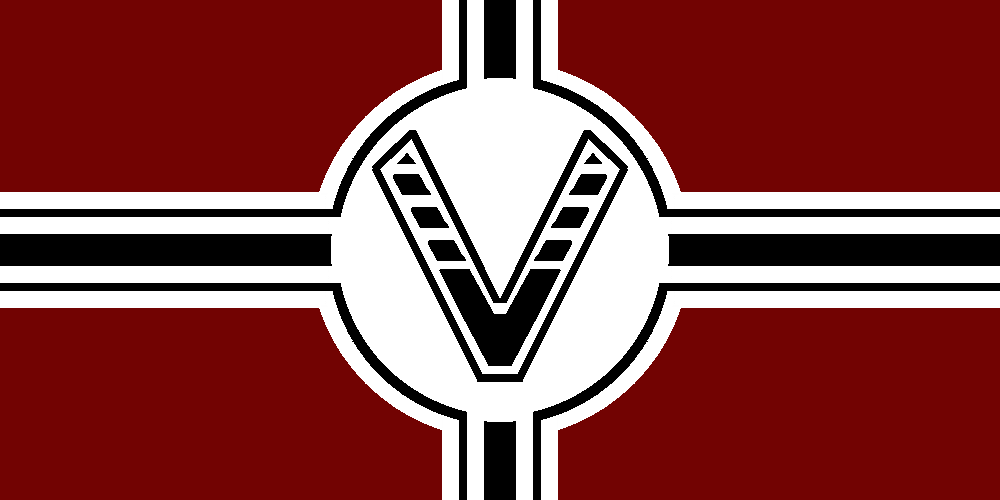 |
|||||
| Common Name | Valsang Union | ||||
| Demonym | Valsang | ||||
| Politics | |||||
| Government | Federal Presidential Republic | ||||
| Foundation | 2069 | ||||
| Preceded by | Jamhana | ||||
| Demography | |||||
The Valsang Union is a collection of united city states brought together under one banner through decades of negotiation and cooperation. Most of the territories had been shattered and split apart during the road wars in the crater. It took years of rebuilding but the Valsang people united and formed the Valsang Union.
The Union was presided over by President Duncan Macleod until its eventual collapse. The nation favoured free enterprise and a functional defensive military. The senate were a group of representatives from each state that create and vote on legislation for the nation as a whole. To keep the senate in check the states each have regional governments that are chosen to elect representative (senators) and govern each individual state. The task of the federal government is to enforce constitutional laws and command the military while the power of the states is to enforce local laws and encourage economic growth. There is no centralized banking system in Valsang, which bases its economy on the true value of its good and services.
Valsang eventually fell to internal conflict with the Crater Confederacy.
Jamhana
|
Incorporated States of Jamhana
|
|||||
|---|---|---|---|---|---|
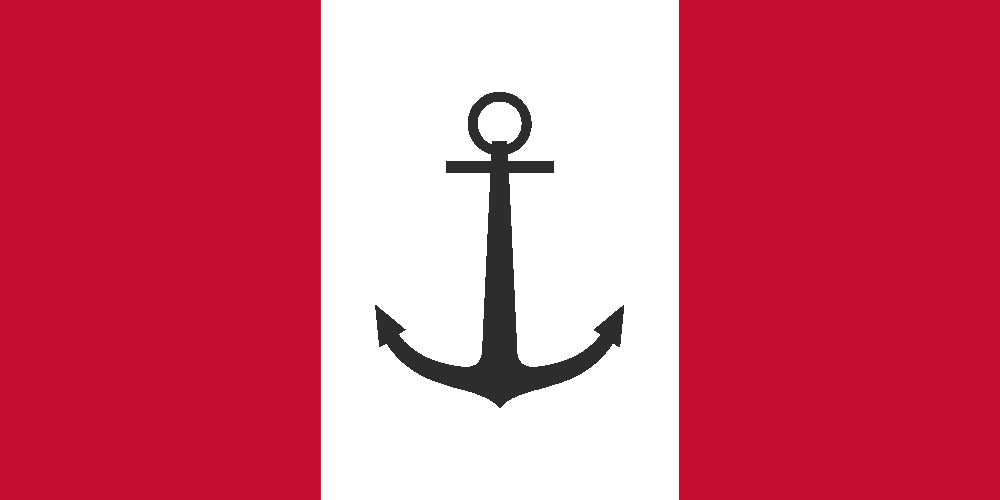 |
|||||
| Common Name | Incorporated States of Jamhana | ||||
| Demonym | Jam | ||||
| Politics | |||||
| Government | Unitary Oligarchy | ||||
| Foundation | 2055 | ||||
| Preceded by | Charum | ||||
| Demography | |||||
The Incorporated States of Jamhana was a socially progressive nation, remarkable for its irreverence towards religion and complete absence of social welfare. The nation operates on a sleek, efficient government or a conglomerate of multinational corporations; it's difficult to tell which.
The territory of the nation encompassed all areas of the crater proper, but not extending further.
The economy is driven almost entirely by the private sector, which is broadly diversified and led by craft sales. Disparity is large with the richest 10% of citizens earning 264 per year while the poor average 15 a ratio of 17.4 to 1.
Jamhana eventually succame to a combination of crime, a weak government, and external pressures over the Kolus Road.
Charum
|
Commonwealth of Charum
|
|||||
|---|---|---|---|---|---|
 |
|||||
| Common Name | Commonwealth of Charum | ||||
| Demonym | Charmum | ||||
| Politics | |||||
| Government | Authoritarian Dictatorship | ||||
| Foundation | 2043 | ||||
| Demography | |||||
Charum was among the first nations to pull themselves from the rubble of the great decline. Their hardships in the decades before bred a harsh and isolationist people.
Remedies
There lie two factors that stave off crater collapse, a stable political environment and expansion.
By establishing an expanded nation beyond the crater. The state can benefit from the wide grassland areas of modern Zokesia and Arcovy. It also reincorporates the urban zones lining the coast near to the crater.
